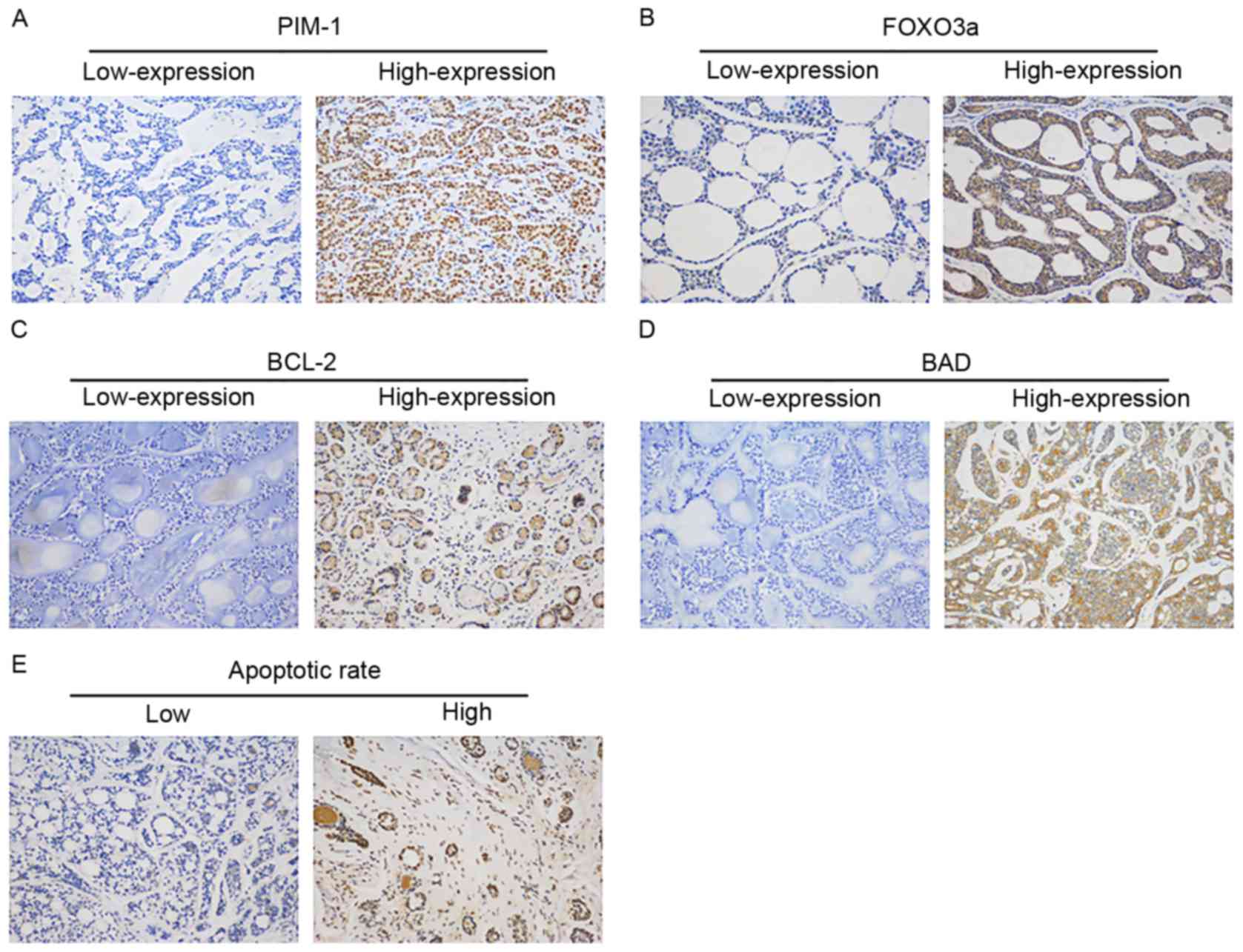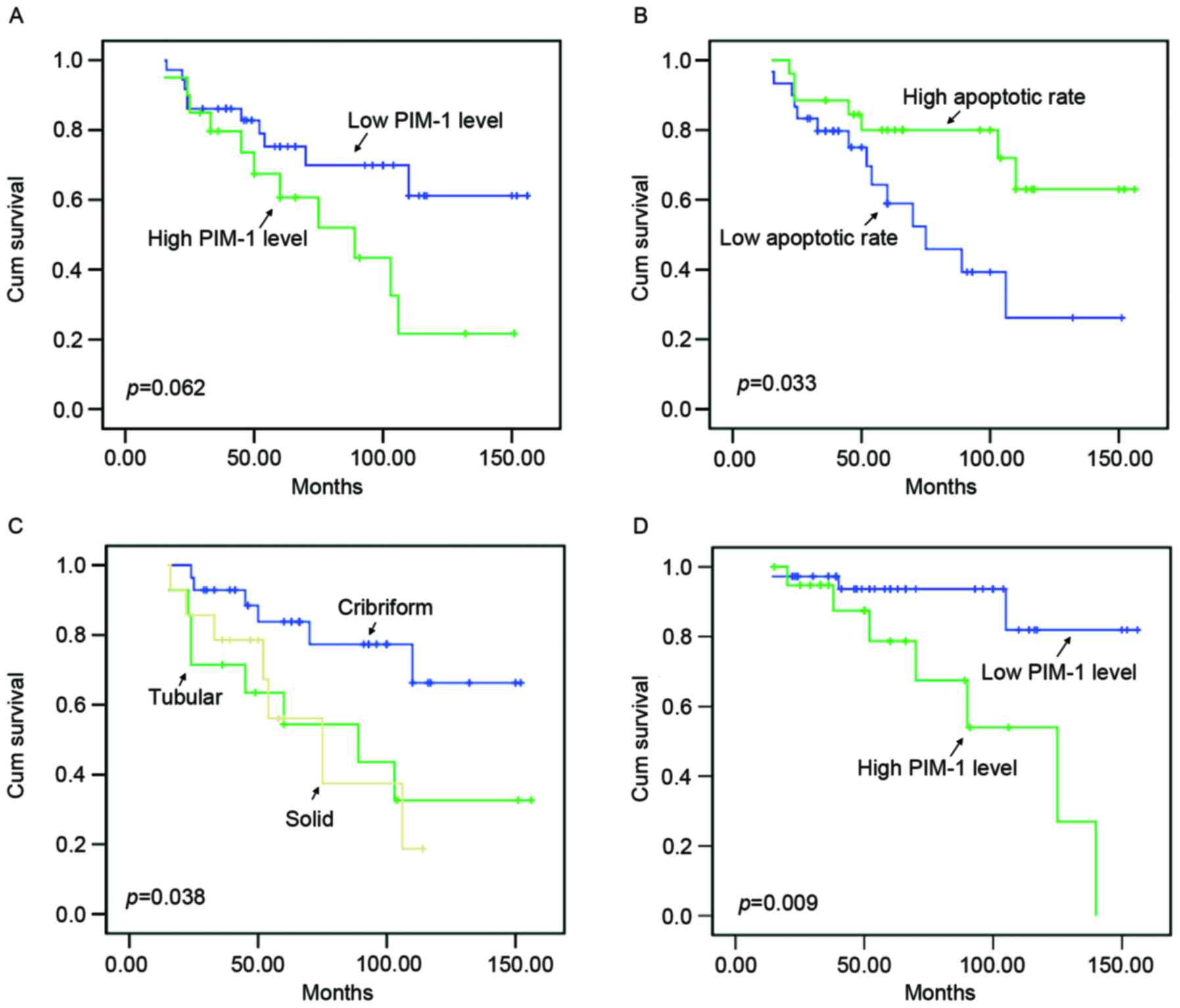|
1
|
International Head and Neck Scientific
Group, . Cervical lymph node metastasis in adenoid cystic carcinoma
of the sinonasal tract, nasopharynx, lacrimal glands and external
auditory canal: A collective international review. J Laryngol Otol.
130:1093–1097. 2016. View Article : Google Scholar : PubMed/NCBI
|
|
2
|
van der Wal JE, Becking AG, Snow GB and
van der Waal I: Distant metastases of adenoid cystic carcinoma of
the salivary glands and the value of diagnostic examinations during
follow-up. Head Neck. 24:779–783. 2002. View Article : Google Scholar : PubMed/NCBI
|
|
3
|
Gondivkar SM, Gadbail AR, Chole R and
Parikh RV: Adenoid cystic carcinoma: A rare clinical entity and
literature review. Oral Oncol. 47:231–236. 2011. View Article : Google Scholar : PubMed/NCBI
|
|
4
|
Liu J, Shao C, Tan ML, Mu D, Ferris RL and
Ha PK: Molecular biology of adenoid cystic carcinoma. Head Neck.
34:1665–1677. 2012. View Article : Google Scholar : PubMed/NCBI
|
|
5
|
Moskaluk CA: Adenoid cystic carcinoma:
Clinical and molecular features. Head Neck Pathol. 7:17–22. 2013.
View Article : Google Scholar : PubMed/NCBI
|
|
6
|
Alvarado Y, Giles FJ and Swords RT: The
PIM kinases in hematological cancers. Expert Rev Hematol. 5:81–96.
2012. View Article : Google Scholar : PubMed/NCBI
|
|
7
|
Yan B, Yau EX, Samanta S, Ong CW, Yong KJ,
Ng LK, Bhattacharya B, Lim KH, Soong R, Yeoh KG, et al: Clinical
and therapeutic relevance of PIM1 kinase in gastric cancer. Gastric
Cancer. 15:188–197. 2012. View Article : Google Scholar : PubMed/NCBI
|
|
8
|
Kim J, Roh M and Abdulkadir SA: Pim1
promotes human prostate cancer cell tumorigenicity and c-MYC
transcriptional activity. BMC Cancer. 10:2482010. View Article : Google Scholar : PubMed/NCBI
|
|
9
|
Li S, Xi Y, Zhang H, Wang Y, Wang X, Liu H
and Chen K: A pivotal role for Pim-1 kinase in esophageal squamous
cell carcinoma involving cell apoptosis induced by reducing Akt
phosphorylation. Oncol Rep. 24:997–1004. 2010.PubMed/NCBI
|
|
10
|
Malinen M, Jääskeläinen T, Pelkonen M,
Heikkinen S, Väisänen S, Kosma VM, Nieminen K, Mannermaa A and
Palvimo JJ: Proto-oncogene PIM-1 is a novel estrogen receptor
target associating with high grade breast tumors. Mol Cell
Endocrinol. 365:270–276. 2013. View Article : Google Scholar : PubMed/NCBI
|
|
11
|
Jin Y, Tong DY, Tang LY, Chen JN, Zhou J,
Feng ZY and Shao CK: Expressions of osteopontin (OPN), ανβ3 and
Pim-1 associated with poor prognosis in Non-small cell lung cancer
(NSCLC). Chin J Cancer Res. 24:103–108. 2012. View Article : Google Scholar : PubMed/NCBI
|
|
12
|
Weirauch U, Beckmann N, Thomas M,
Grünweller A, Huber K, Bracher F, Hartmann RK and Aigner A:
Functional role and therapeutic potential of the pim-1 kinase in
colon carcinoma. Neoplasia. 15:783–794. 2013. View Article : Google Scholar : PubMed/NCBI
|
|
13
|
Nawijn MC, Alendar A and Berns A: For
better or for worse: The role of Pim oncogenes in tumorigenesis.
Nat Rev Cance. 11:23–34. 2011. View
Article : Google Scholar
|
|
14
|
Morishita D, Katayama R, Sekimizu K,
Tsuruo T and Fujita N: Pim kinases promote cell cycle progression
by phosphorylating and down-regulating p27Kip1 at the
transcriptional and posttranscriptional levels. Cancer Res.
68:5076–5085. 2008. View Article : Google Scholar : PubMed/NCBI
|
|
15
|
Siddiqui WA, Ahad A and Ahsan H: The
mystery of BCL2 family: Bcl-2 proteins and apoptosis: An update.
Arch Toxicol. 89:289–317. 2015. View Article : Google Scholar : PubMed/NCBI
|
|
16
|
Magnuson NS, Wang Z, Ding G and Reeves R:
Why target PIM1 for cancer diagnosis and treatment? Future Oncol.
6:1461–1478. 2010. View Article : Google Scholar : PubMed/NCBI
|
|
17
|
Ling ZQ, Guo W, Lu XX, Zhu X, Hong LL,
Wang Z, Wang Z and Chen Y: A Golgi-specific protein PAQR3 is
closely associated with the progression, metastasis and prognosis
of human gastric cancers. Ann Oncol. 25:1363–1372. 2014. View Article : Google Scholar : PubMed/NCBI
|
|
18
|
Nensa F, Stattaus J, Morgan B, Horsfield
MA, Soria JC, Besse B, et al: Dynamic contrast-enhanced MRI
parameters as biomarkers for the effect of vatalanib in patients
with non-small-cell lung cancer PIM kinases: An overview in tumors
and recent advances in pancreatic cancer PIM kinases: An overview
in tumors and recent advances in pancreatic cancer. Future Oncol.
10:823–833. 2014. View Article : Google Scholar : PubMed/NCBI
|
|
19
|
Xu J, Xiong G, Cao Z, Huang H, Wang T, You
L, Zhou L, Zheng L, Hu Y, Zhang T and Zhao Y: PIM-1 contributes to
the malignancy of pancreatic cancer and displays diagnostic and
prognostic value. J Exp Clin Cancer Res. 35:1332016. View Article : Google Scholar : PubMed/NCBI
|
|
20
|
Matou-Nasri S, Rabhan Z, Al-Baijan H,
Al-Eidi H, Yahya WB, Al Abdulrahman A, Almobadel N, Alsubeai M, Al
Ghamdi S, Alaskar A, et al: CD95-mediated apoptosis in Burkitt's
lymphoma B-cells is associated with Pim-1 down-regulation. Biochim
Biophys Acta. 1863:239–252. 2017. View Article : Google Scholar : PubMed/NCBI
|
|
21
|
Wu X, Cai ZD, Lou LM and Zhu YB:
Expressions of p53, c-MYC, BCL-2 and apoptotic index in human
osteosarcoma and their correlations with prognosis of patients.
Cancer Epidemiol. 36:212–216. 2012. View Article : Google Scholar : PubMed/NCBI
|
|
22
|
Jia Y, Dong B, Tang L, Liu Y, Du H, Yuan
P, Wu A and Ji J: Apoptosis index correlates with chemotherapy
efficacy and predicts the survival of patients with gastric cancer.
Tumour Biol. 33:1151–1158. 2012. View Article : Google Scholar : PubMed/NCBI
|
|
23
|
Adell GC, Zhang H, Evertsson S, Sun XF,
Stål OH and Nordenskjöld BA: Apoptosis in rectal carcinoma:
Prognosis and recurrence after preoperative radiotherapy. Cancer.
91:1870–1875. 2001. View Article : Google Scholar : PubMed/NCBI
|
|
24
|
Fu DR, Kato D, Watabe A, Endo Y and
Kadosawa T: Prognostic utility of apoptosis index, Ki-67 and
survivin expression in dogs with nasal carcinoma treated with
orthovoltage radiation therapy. J Vet Med Sci. 76:1505–1512. 2014.
View Article : Google Scholar : PubMed/NCBI
|
|
25
|
Reséndiz-Martínez J, Asbun-Bojalil J,
Huerta-Yepez S and Vega M: Correlation of the expression of YY1 and
Fas cell surface death receptor with apoptosis of peripheral blood
mononuclear cells, and the development of multiple organ
dysfunction in children with sepsis. Mol Med Rep. 15:2433–2442.
2017. View Article : Google Scholar : PubMed/NCBI
|
|
26
|
Yamazaki K, Hasegawa M, Ohoka I, Hanami K,
Asoh A, Nagao T, Sugano I and Ishida Y: Increased E2F-1 expression
via tumour cell proliferation and decreased apoptosis are
correlated with adverse prognosis in patients with squamous cell
carcinoma of the oesophagus. J Clin Pathol. 58:904–910. 2005.
View Article : Google Scholar : PubMed/NCBI
|
|
27
|
Shou Z, Lin L, Liang J, Li JL and Chen HY:
Expression and prognosis of FOXO3a and HIF-1α in nasopharyngeal
carcinoma. J Cancer Res Clin Oncol. 138:585–593. 2012. View Article : Google Scholar : PubMed/NCBI
|
|
28
|
Lu M, Zhao Y, Xu F, Wang Y, Xiang J and
Chen D: The expression and prognosis of FOXO3a and Skp2 in human
ovarian cancer. Med Oncol. 29:3409–3415. 2012. View Article : Google Scholar : PubMed/NCBI
|
|
29
|
Bradley PJ: Adenoid cystic carcinoma of
the head and neck: A review. Curr Opin Otolaryngol Head Neck Surg.
12:127–132. 2004. View Article : Google Scholar : PubMed/NCBI
|
|
30
|
Yang X, Dai J, Li T, Zhang P, Ma Q, Li Y,
Zhou J and Lei D: Expression of EMMPRIN in adenoid cystic carcinoma
of salivary glands: Correlation with tumor progression and
patients' prognosis. Oral Oncol. 46:755–760. 2010. View Article : Google Scholar : PubMed/NCBI
|
|
31
|
Zhang J, Peng B and Chen X: Expressions of
nuclear factor kappaB, inducible nitric oxide synthase, and
vascular endothelial growth factor in adenoid cystic carcinoma of
salivary glands: Correlations with the angiogenesis and clinical
outcome. Clin Cancer Res. 11:7334–7343. 2005. View Article : Google Scholar : PubMed/NCBI
|












